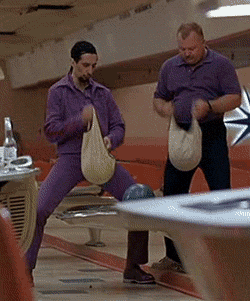cranberry
Active Member
It doesn't contribute in that it adds nitrates to the system, it contributes by not efficently converting the nitrate to nitrogen gas.
What is to blame for the nitrates in our tank is our heavy feeding hand, our too crowded tanks and our laziness in affiliation for maintenance.
Did you ever see the "I love Lucy Show"?
Here's another analogy... bare with me
There 3 different rooms filled with workers. There's 10 men in each of the first two rooms and 2 in the last. Ammonia balls are thrown into the first room and the 10 men are able to pick them up and throw them into the next room so that they never build up. They convert to nitrite on the way through the doorway. The 10 workers in the next room are able to keep up the pace in picking up the nitrite balls and throwing them into the next room. They convert to nitrate on the way through the doorway. There's only 2 workers in the last room and they are picking up the nitrate balls as fast as they can and throwing them out the window (where they convert to nitrogen gas) but the nitrate balls are building up around their feet.
It does not "create" nitrate, but it can be a poor filter if you are looking for a good way to process nitrate.... will in processing more than the men in room number 3 can handle.
The reason the rich oxygen environment of a trickle filter has such issues in converting the nitrate is because the bacteria involved primarily in that process is ANaerobic and there's just not many areas on bioballs that is conducive to the colonization of anaerobic bacteria. The nitrosomonos and nitrobacters are aerobic.
But if we fed less, had less fish and cleaned more/better there wouldn't be so much ammonia to convert to nitrite to convert to nitrate. The problem isn't with our filtration, it's with our heavy hand, our mad stocking schemes and our complacency.
The answer to high nitrates is always, feed less, stock less, clean more. period.
What is to blame for the nitrates in our tank is our heavy feeding hand, our too crowded tanks and our laziness in affiliation for maintenance.
Did you ever see the "I love Lucy Show"?
Here's another analogy... bare with me
There 3 different rooms filled with workers. There's 10 men in each of the first two rooms and 2 in the last. Ammonia balls are thrown into the first room and the 10 men are able to pick them up and throw them into the next room so that they never build up. They convert to nitrite on the way through the doorway. The 10 workers in the next room are able to keep up the pace in picking up the nitrite balls and throwing them into the next room. They convert to nitrate on the way through the doorway. There's only 2 workers in the last room and they are picking up the nitrate balls as fast as they can and throwing them out the window (where they convert to nitrogen gas) but the nitrate balls are building up around their feet.
It does not "create" nitrate, but it can be a poor filter if you are looking for a good way to process nitrate.... will in processing more than the men in room number 3 can handle.
The reason the rich oxygen environment of a trickle filter has such issues in converting the nitrate is because the bacteria involved primarily in that process is ANaerobic and there's just not many areas on bioballs that is conducive to the colonization of anaerobic bacteria. The nitrosomonos and nitrobacters are aerobic.
But if we fed less, had less fish and cleaned more/better there wouldn't be so much ammonia to convert to nitrite to convert to nitrate. The problem isn't with our filtration, it's with our heavy hand, our mad stocking schemes and our complacency.
The answer to high nitrates is always, feed less, stock less, clean more. period.



